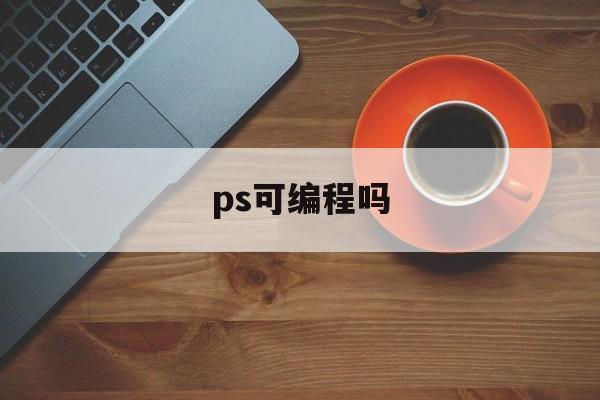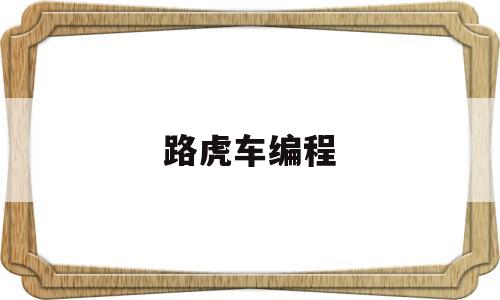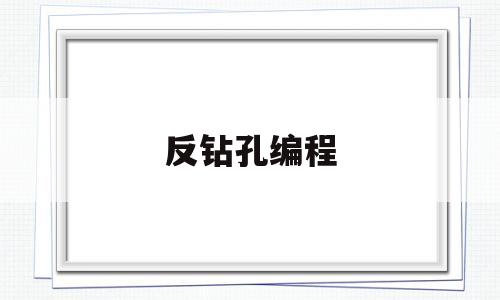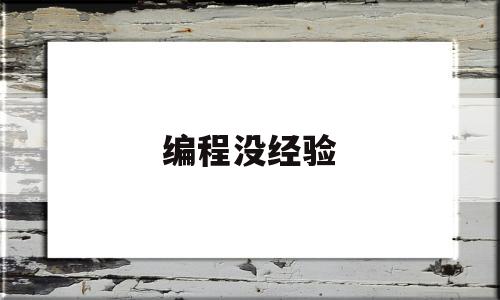(点击上方公众号,可快速关注)
英文:Mark Brown 译文:伯乐在线专栏作者 - 王浩
欢迎投稿,请点击这里查看详情;
如需转载,发送「转载」二字查看说明
“游戏主循环”是一种能够随时间改变状态的用于渲染动画和游戏的技术。它的核心是一个尽可能频繁地运行的方法,来接收用户输入,更新随时间改变的状态,然后绘制当前帧。
在这篇短文中你将了解这些基础技术是如何工作的,并且可以自己制作出基于浏览器的游戏和动画。
Java 中的“游戏主循环”看起来像这样:
functionupdate(progress){
// Update the state of the world for the elapsed time since last render
}
functiondraw(){
// Draw the state of the world
}
functionloop(timestamp){
varprogress= timestamp- lastRender
update(progress)
draw()
lastRender= timestamp
window.requestAnimationFrame(loop)
}
varlastRender= 0
window.requestAnimationFrame(loop)
requestAnimationFrame 方法请求浏览器在下一次重绘之前尽可能快地调用特定的方法。它是渲染动画专用的 API,但你也可以用 setTimeout 方法设置一个短的超时时间来达到相似的效果。当回调函数开始触发时,requestAnimationFrame 传入一个时间戳作为参数,它包含从窗口加载到现在的毫秒数,等价于 performance.now()。
progress 值,或者说每次渲染的时间间隔对于创建流畅的动画是至关重要的。我们通过它来调整 update 方法中的 x 轴和 y 轴的位置,保证动画以稳定的速度运动。
更新位置
我们的第一个动画简单到不行。一个红色的方块向右移动直到碰到画布的边缘,然后回到起始位置。
我们需要存储方块的位置,以及在 update 方法中 x 轴位置的增量。当到达边界时我们可以减掉画布的宽度来让它回到起点。
varcanvas= document.getElementById("canvas")
varwidth= canvas.width
varheight= canvas.height
varctx= canvas.getContext("2d")
ctx.fillStyle= "red"
functiondraw(){
ctx.clearRect(0,0,width,height)
ctx.fillRect(state.x- 5,state.y- 5,10,10)
}
绘制新一帧
本例使用 canvas 元素来渲染图像,不过游戏主循环也可以结合其他输出,比如 HTML 或者 SVG 来使用。
draw 方法简单地渲染游戏世界的当前状态。每一帧我们都要清空画布,然后在state 对象中保存的位置上重新画一个 10px 的红方块。
varcanvas= document.getElementById("canvas")
varwidth= canvas.width
varheight= canvas.height
varctx= canvas.getContext("2d")
ctx.fillStyle= "red"
functiondraw(){
ctx.clearRect(0,0,width,height)
ctx.fillRect(state.x- 5,state.y- 5,10,10)
}
然后我们就发现它动起来了!
在 SitePoint 的 CodePen 可以查看示例:Game Loop in Java: Basic Movement。
注:在这个例子中你可能会注意到画布的大小是通过 CSS 和 HTML 元素的 width, height 属设置的。CSS 样式设置了画布在页面绘画的真实尺寸,而 HTML 属性则设置了画布 API 需要用到的坐标系或者网格的大小。看看 Stack Overflow 上的这个问题来了解更多。
响应用户输入
下面我们要获取键盘输入来控制对象的位置,state.pressedKeys 会追踪用户按下了哪一个键。
varstate= {
x: (width/ 2),
y: (height/ 2),
pressedKeys: {
left: false,
right: false,
up: false,
down: false
}
}
我们监听所有的 keydown 和 keyup 事件,并且同步更新 update.pressedKeys。我用 D 键作为向右方向,A 为左,W 为上,S 为下。你可以在这里找到键盘码列表。
varkeyMap= {
68: 'right',
65: 'left',
87: 'up',
83: 'down'
}
functionkeydown(event){
varkey= keyMap[event.keyCode]
state.pressedKeys[key]= true
}
functionkeyup(event){
varkey= keyMap[event.keyCode]
state.pressedKeys[key]= false
}
window.addEventListener("keydown",keydown,false)
window.addEventListener("keyup",keyup,false)
然后我们就只需要根据按下的键来更新 x轴 和 y轴 的值,并保证对象在边界以内。
functionupdate(progress){
if(state.pressedKeys.left){
state.x-= progress
}
if(state.pressedKeys.right){
state.x+= progress
}
if(state.pressedKeys.up){
state.y-= progress
}
if(state.pressedKeys.down){
state.y+= progress
}
// Flip position at boundaries
if(state.x width){
state.x-= width
}
elseif(state.x 0){
state.x+= width
}
if(state.y height){
state.y-= height
}
elseif(state.y 0){
state.y+= height
}
}
现在我们就可以响应用户输入了!
在 SitePoint的 CodePen 可以查看示例:Game Loop in Java: Dealing with User Input。
行星游戏
既然现在我们已经掌握了基本原理,那么就可以做些更有意思的事了。
做一艘看起来像经典游戏“行星”里的飞船其实一点都不复杂。
state 对象需要额外存储一个向量(一个 x、y 对)用来移动,还要保存一个 rotation 值来标记飞船的方向。
varstate= {
position: {
x: (width/ 2),
y: (height/ 2)
},
movement: {
x: 0,
y: 0
},
rotation: 0,
pressedKeys: {
left: false,
right: false,
up: false,
down: false
}
}
update 方法需要做三件事:
根据左右键更新方向(rotation)
根据上下键和方向更新移动向量(movement)
根据移动向量和画布边界更新对象位置(position)
functionupdate(progress){
// Make a smaller time value that's easier to work with
varp= progress/ 16
updateRotation(p)
updateMovement(p)
updatePosition(p)
}
functionupdateRotation(p){
if(state.pressedKeys.left){
state.rotation-= p* 5
}
elseif(state.pressedKeys.right){
state.rotation+= p* 5
}
}
functionupdateMovement(p){
// Behold! Mathematics for mapping a rotation to it's x, y components
varaccelerationVector= {
x: p* .3* Math.cos((state.rotation-90)* (Math.PI/180)),
y: p* .3* Math.sin((state.rotation-90)* (Math.PI/180))
}
if(state.pressedKeys.up){
state.movement.x+= accelerationVector.x
state.movement.y+= accelerationVector.y
}
elseif(state.pressedKeys.down){
state.movement.x-= accelerationVector.x
state.movement.y-= accelerationVector.y
}
// Limit movement speed
if(state.movement.x 40){
state.movement.x= 40
}
elseif(state.movement.x -40){
state.movement.x= -40
}
if(state.movement.y 40){
state.movement.y= 40
}
elseif(state.movement.y -40){
state.movement.y= -40
}
}
functionupdatePosition(p){
state.position.x+= state.movement.x
state.position.y+= state.movement.y
// Detect boundaries
if(state.position.x width){
state.position.x-= width
}
elseif(state.position.x 0){
state.position.x+= width
}
if(state.position.y height){
state.position.y-= height
}
elseif(state.position.y 0){
state.position.y+= height
}
}
draw 方法在绘制箭头之前会移动并转动画布的原点。
functiondraw(){
ctx.clearRect(0,0,width,height)
ctx.save()
ctx.translate(state.position.x,state.position.y)
ctx.rotate((Math.PI/180)* state.rotation)
ctx.strokeStyle= 'white'
ctx.lineWidth= 2
ctx.beginPath()
ctx.moveTo(0,0)
ctx.lineTo(10,10)
ctx.lineTo(0,-20)
ctx.lineTo(-10,10)
ctx.lineTo(0,0)
ctx.closePath()
ctx.stroke()
ctx.restore()
}
这就是我们需要重建类似“行星”游戏飞船的所有代码。本例的操作按键和前面那个完全一样(D键向右,A 向左,W向上,S 向下)
在 SitePoint的 CodePen 可以查看示例:Game Loop in Java: Recreating Asteroids。
添加行星、子弹和碰撞监测的工作就交给你了~
升级
如果你对本文很感兴趣,那你肯定会喜欢阅读这篇《Mary Rose Cook live-code Space Invaders form scrach》来看一个更复杂的例子。虽然是发表于几年前,但它是一篇介绍开发浏览器游戏的非常棒的文章。
觉得本文对你有帮助?请分享给更多人
关注「前端大全」,提升前端技能
译者简介 ( 点击 → 加入专栏作者)
王浩:phper @深圳









